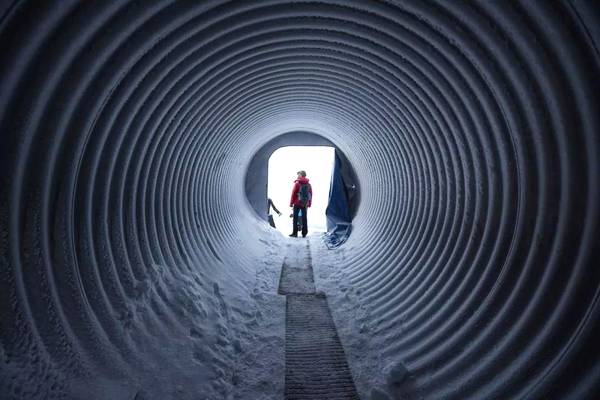In the realm of photography, composition is like a carefully planned chess game, where every element is a crucial chess piece, and balance is the key principle for winning this game. A balanced photographic composition doesn’t simply mean arranging elements symmetrically or distributing them evenly. Instead, it creates a visual harmony and stability in the frame, allowing the viewer’s gaze to wander comfortably and immerse themselves in the artistic conception created by the photographer.
Symmetrical composition is an intuitive way to achieve balance. It evenly distributes the main elements along the central axis of the frame, making the left and right or the top and bottom appear mirror-like in similarity. When photographing magnificent architectures, this composition method is often utilized to its fullest. For example, in an ancient palace, the solemn main gate is located right in the center of the frame, and the upturned eaves and dougong (brackets) extend symmetrically to both sides, demonstrating a majestic and stable aura. The reflection on a calm lake surface also naturally fits symmetrical composition. The mountains, waters, and the sky echo with their reflections in the water, making the image seem like a quiet dreamland, giving people a sense of peace and tranquility. The viewer’s eyes will be evenly distributed across the frame to appreciate the overall harmonious beauty.
However, balance isn’t achieved solely through symmetry. Asymmetrical composition seeks a delicate sense of balance from what seems unbalanced, through the contrast and coordination of elements in terms of size, color, shape, and position. In a picture, an object that occupies a small area but has bright colors can counterbalance a large, low-key background. For instance, in a vast expanse of desert, there is a lonely figure in a red dress in the distance. The tiny figure forms a sharp contrast in size with the boundless desert, but the red dress becomes the visual focus of the picture, attracting the viewer’s attention. Meanwhile, the monotony of the desert provides enough space for the figure, so that the two achieve a balance in visual weight, making the whole picture full of a sense of story and tension.
The golden ratio rule is also an important means of constructing a balanced composition. Divide the frame according to the golden ratio and place the main subject at the intersection of the dividing lines or nearby. Then the picture will look natural and harmonious. When taking a portrait, the subject’s eyes are usually placed at the golden section points, so that the person in the picture can stand out while also blending naturally into the background environment. The rest of the frame creates a sense of hierarchy and space through blank areas or the arrangement of some secondary elements, avoiding imbalance caused by the accumulation of elements.
Lines also play an indispensable role in balanced composition. Leading lines can guide the viewer’s eyes to move within the frame, thus creating a dynamic balance. For example, when photographing a winding mountain path stretching into the distance, the path, as a leading line, starts from the bottom edge of the frame and gradually extends towards the center of the picture. The viewer’s eyes will follow the path to explore. Meanwhile, elements such as trees and mountains on both sides of the path are distributed in an orderly manner, stabilizing the two sides of the frame, so that the picture achieves a balance between dynamic and static, guidance and stability, making the viewer feel as if they were on the scene and experience the peaceful and profound atmosphere in the mountain forest.
The balance in photographic composition is an artistic trade-off, which requires photographers to have sharp observational skills and unique aesthetic perceptions. By skillfully applying methods such as symmetry and asymmetry, the golden ratio, element contrast, and line guidance, photographers can construct a visually ordered, harmonious, and fascinating world on a two-dimensional frame, making each photo a unique interpretation of the beauty of balance, freezing those heart-touching moments, so that when viewers appreciate the photos, they can not only see the scenes in the pictures but also feel the emotions and moods conveyed by the photographers through the lens.
